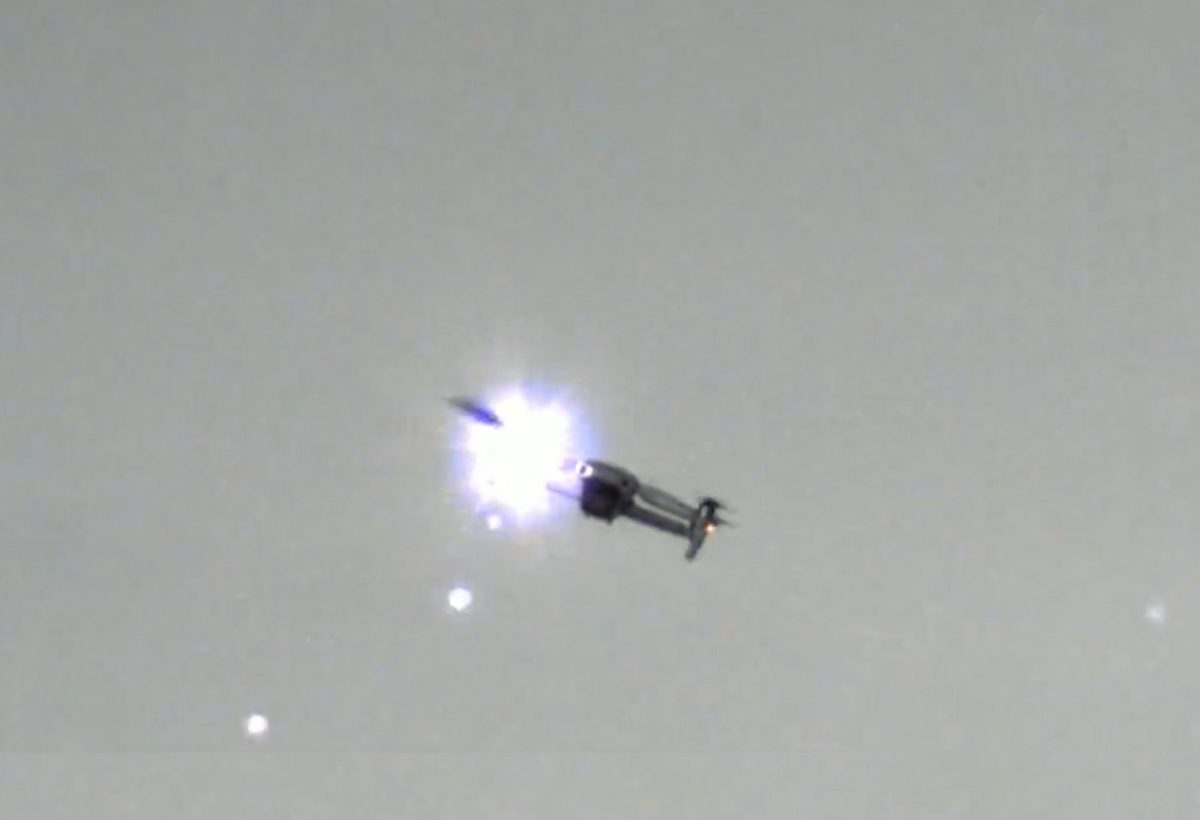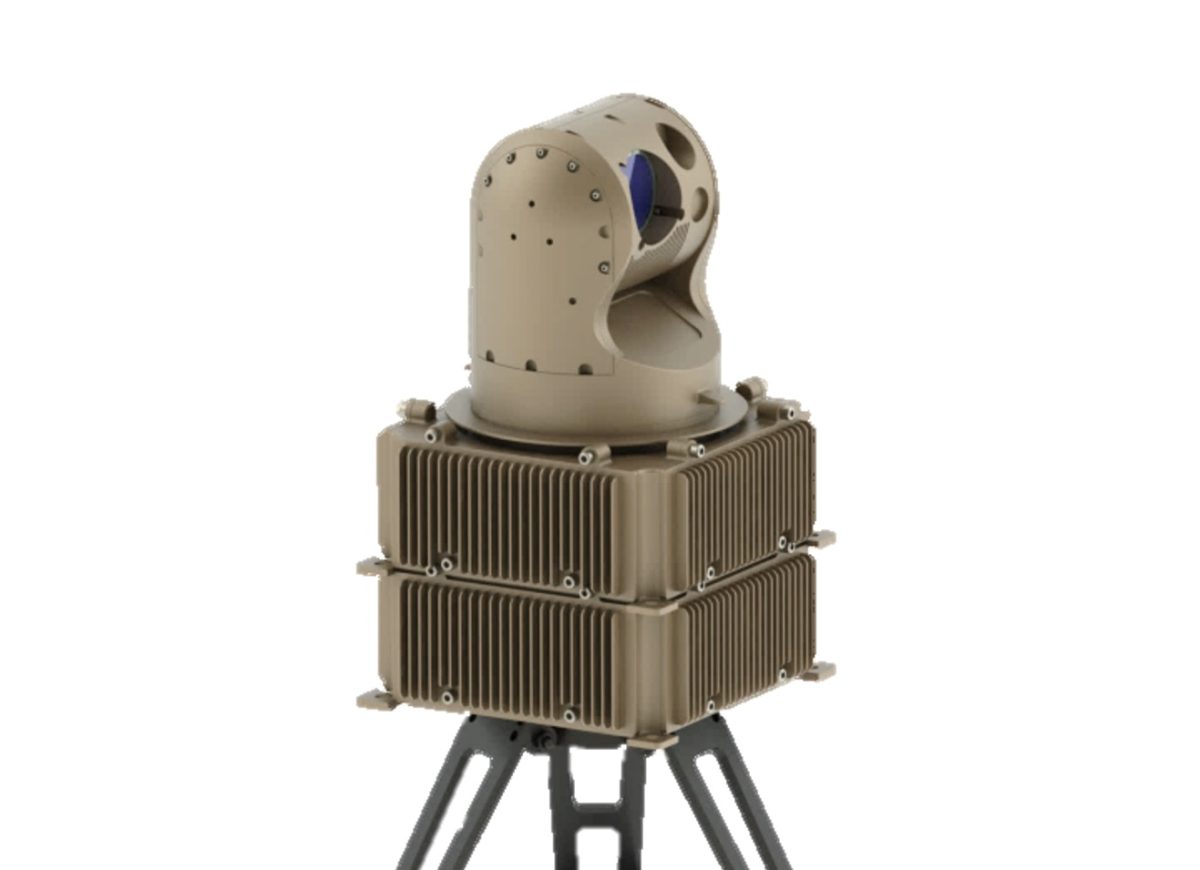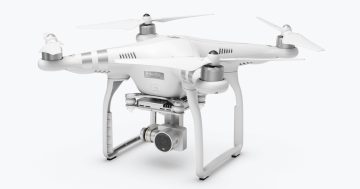
Kill shot! A Fractl laser shoots down a drone during a test. Image: Screenshot.
Australian counter-drone technology company AIM Defence has been invited by the Canadian Department of National Defence to demonstrate a high-power laser system in an international counter-drone exercise in May and June.
AIM Defence will demonstrate its Fractl system alongside 14 other companies from around the globe against ”Red Team” drones in a series of real-world scenarios at the 2024 Counter Uncrewed Aerial Systems Sandbox. The Sandbox exercise is centred on detecting and defeating micro and mini drones, and is hosted under Canada’s Innovation for Defence Excellence and Security program.
The tripod-mounted Fractl system is a portable battery-powered laser that can generate sufficient energy to burn through steel. Using a laser beam the size of a 10-cent piece, it can shoot down small drones travelling at more than 100 km/h at ranges of a kilometre or more.
Fractl’s targeting system can be operated from anywhere in the world, and can be integrated with military sensor suites and command and control systems.
This year’s Sandbox will be the first time that high-power lasers such as Fractl have been included in the exercise.
AIM Defence co-founder Dr Jae Daniel said: “Autonomous and remotely operated attack drones have become a prolific and increasing asymmetric threat both in conflict zones and to public safety.
“The Sandbox is an important opportunity for AIM Defence to demonstrate Fractl’s precision tracking and targeting in a variety of defensive operations.”
The event provides an opportunity for innovators to demonstrate and test their technologies in a real-world environment, and to gain valuable feedback from experts and potential customers.
The Sandbox exercise is overseen by Canadian Armed Forces personnel as well as military and science experts from the US Government’s Irregular Warfare Technical Support Directorate and Royal Canadian Mounted Police end users.

The tripod-mounted Fractl weighs less than 50 kg. Photo: AIM Defence.
AIM Defence co-founder Jessica Glenn said: “The user feedback will be important for ongoing development of our Fractl system, which is low-cost and portable, and engineered for enhanced safety compared to typical directed energy systems.”
Defence Research and Development Canada’s director general R&D innovation Dr Philippe Hebert said it was important to find solutions to the problems armed forces were facing.
“Certainly UAS [uncrewed aerial systems] is a problem the Canadian forces are facing – how do we defend ourselves, how do we detect them,” he said.
“So I think our role is really to make sure that we can put together an event like this, bringing some of those innovators into an area where they can basically have free range, if you wish, to show us what they’ve got.”













